My Latest Avery Acquisitions by Terry Meinke
The following narrative was original written in fall 2021 and was published in the Dorset Thimble Society Spring 2022 newsletter.
__________________________________________________________________________________________________________________________________The last two years have been extremely difficult for me because I love to travel, especially to England, and the Covid pandemic has prevented me from doing that. Instead, I decided to spend much of my time online searching the Internet for historical information about the companies related to Avery needle cases. After publishing one book in the summer of 2020 about the 25 Redditch area companies, I re-focused my attention on the Birmingham area where Avery needle cases were originally manufactured. Currently, I am about 95% complete with this book entitled Histories of the Birmingham Companies Associated with Avery Needle Cases. I just need one more trip to Birmingham, my favorite city in England, to complete my research and photograph the areas where these 18 companies were originally located. Besides this research there are two other things that have kept me busy during the pandemic and always remind me of how much I love England. I spend most of my evenings watching BBC television (i.e., Father Brown, Doc Martin, Poldark, Shakespeare and Hathaway, Unforgotten, etc.). Then each day I devote a little time to look for Avery style needle cases to add to my collection. Let me tell you about the three rare Averys I purchased during the summer of 2021 and how they helped me become more knowledgeable about British history. All three of these items I have only seen once or twice during my 29 years of collecting.
One day in early June I discovered the Oval Tub - Ladies Portrait Bust with the W. Avery & Son name stamped on the bottom on an Internet auction website. I immediately purchased it and after it arrived a week later, I decided to see if I could figure out who the Victorian woman on the lid was. In order to do that I needed to have an idea about when this item was made. The diamond registration mark on the bottom was 16, I, W which when translated proved the design was registered on March 16, 1872. Now that I had a date for this item, all I needed to do was find a woman from around 1872 who looked like the lady on this needle case.
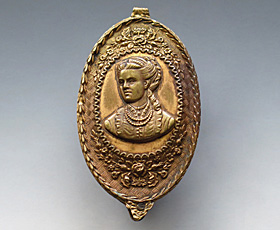
Based on other Avery needle cases it seemed most likely that the portrait on this needle case was a member of the royal family. It was not Queen Victoria since it did not resemble any of the known paintings, drawings, photographs or depictions of the Queen. Therefore, I searched for photographs of the Queen’s daughters and daughter-in-law because the names Helen, Louise, Beatrice and Alexandra were stamped on several other Avery needle cases. From various drawings and photographs, the woman on this needle case seems to be Louise. When Louise married in 1871, she was the first daughter of a British sovereign to marry a British subject since 1515 and as a result was more popular with the British people than her sisters. Louise was not only very intelligent and inquisitive but was considered by many to be the most artistic and beautiful of Queen Victoria’s daughters. From 1878 until 1883 she lived in Ottawa as her husband was the Governor General of Canada during those years. Lake Louise in Alberta was named after her. In her 1871 engagement photograph seen here, Louise has the same full face, hairstyle, ruffled dress and two beaded necklaces as the unknown woman on this needle case. Since none of the other members of Queen Victoria’s family look like this, it seems most likely that the woman on this needle case is in fact Princess Louise.
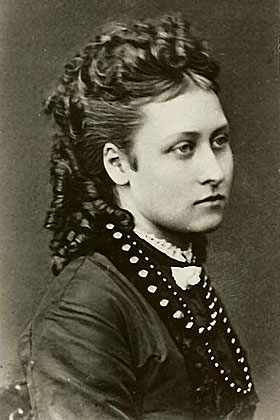
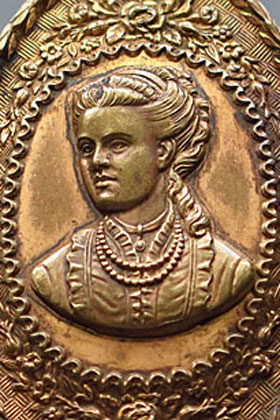
On June 16 the Bleasdales Auction was held online and I had the pleasure of winning Lot 661 for the item with the “Empress Needle Case” name stamped on one side and “R. Wyers Manufacturer Redditch” on the other side. Who is the woman shown on this needle case? Although the lady’s portrait on this item only slightly resembles the Queen, it seems most likely that this needle case was created around 1877 as that is when Queen Victoria became the Empress of India. The British Prime Minister at the time, Benjamin Disraeli, created this position as a way to show the world the British ruled over India.
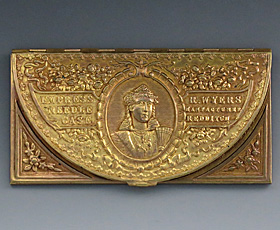
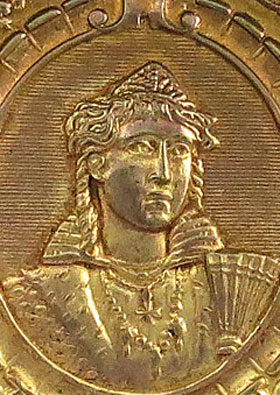
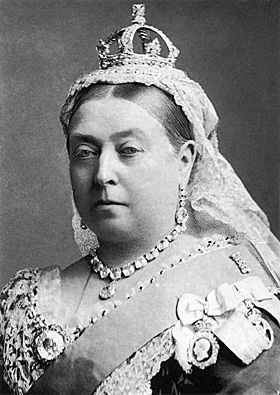
In late August I purchased the Lap Desk - Royal Portrait Busts needle case with the Avery name stamped on the bottom at an auction on eBay. The royal couple whose busts are displayed on this needle case appear to be Prince George and Princess Mary. This item’s design is identical to Avery’s Lap Desk - Diamond Jubilee needle case only the portrait busts on the top are different. Because Queen Victoria's Diamond Jubilee occurred in 1897, this needle case design appears to have been created for that event. In 1897 Prince George was second in line to the throne and he and his wife would have been popular subjects to include on a diamond jubilee souvenir. Today one finds many British souvenirs that contain the portraits of Queen Elizabeth II's grandson, Prince William, also second in line to the throne and his wife, Catherine.
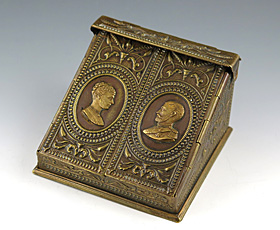
Prince George, the grandson of Queen Victoria, was born in 1865. At the time of his birth, he was third in line to the throne, his father Albert Edward was first followed by his older brother Albert Victor. As there was no expectation that he would become king, his father allowed him to join the military at age 12. George served in the Royal Navy from 1877 until 1892 travelling around the world visiting many of the areas of the British Empire. His brother became engaged in 1891 to their second cousin once removed Princess Mary of Teck. A few months after the engagement, the brother died unexpectedly meaning George was now second in line to the throne. Owing to his brother’s death and Mary’s relationship with the Royal family, George and Mary became friends and a year later George proposed. George and Mary were united in marriage in 1893 and had six children between 1894 and 1905. When Queen Victoria died in 1901, his father ascended to the throne as King Edward VII and George became the Prince of Wales. Then in 1910 after his father’s death, George became King George V and was crowned at Westminster Abbey in 1911. He remained in power for 25 years. During the First World War (1914-1918) George V renamed the monarchy the House of Windsor due to anti-German sentiment in the UK, and he witnessed the collapse of his first cousin’s empires in Russia and Germany. He also saw the rise of socialism, communism and fascism in Europe and the Anglo-Irish War. When George V died in 1936 his eldest son became King Edward VIII for a short period of time before abdicating that same year to marry the twice divorced America socialite Wallis Simpson. Therefore, his second son became King George VI in 1936, a position the son held until 1952 when George V’s granddaughter became Queen Elizabeth II.
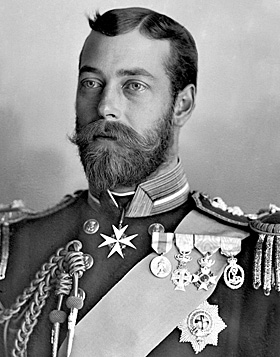
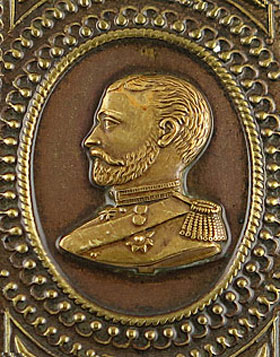
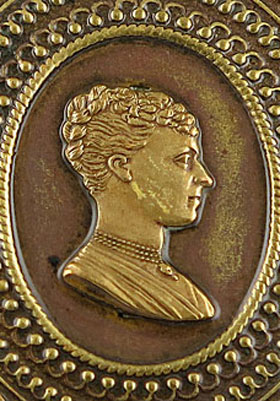
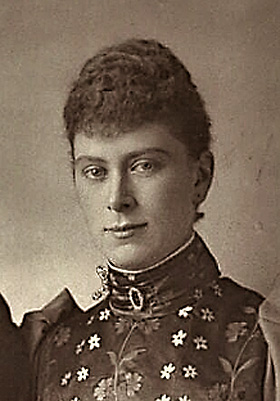
Please let me know if you disagree with my assessment of the individuals represented on these Avery needle cases. I can be reached via email at meinket@yahoo.com.
Sources: Historical information about the Royal family and photographs of Princess Louise, Queen Victoria and Mary of Teck are from Wikipedia public domain. The photograph of George V is from Wikimedia public domain.




